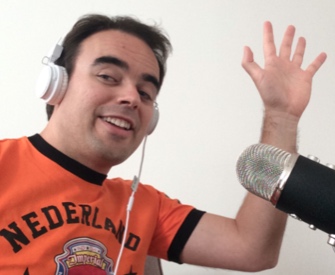Dutch history – The story of the orange carrot
CLICK HERE to subscribe to my Youtube channel
You probably know that the colour orange is related to the Dutch and the Netherlands.
You see it in tourist information, the colour of sports outfits and, well … actually in almost anything that is related to the Dutch identity.
The origin of this comes from the first Dutch king: Willem van Oranje.
Willem van Oranje (William of Orange 1533-1584), also called the ‘Father of the Netherlands’, led the Dutch War of Independence against Spain in the 16th century.
But where does ‘van Oranje’ come from?
He inherited the ‘Orange’, a region in what is now France, from his nephew. So basically, we owe our orange colour to a French region.
So that’s the story behind the colour orange and the Netherlands. Now about the story of the orange carrot.
The story of the orange carrot
So now there’s the orange carrot. And is this because of the Dutch king? Let’s go back to the beginning.
The original carrots were not orange at all; they used to be white or purple.
The current orange carrot is the result of cross breeding. The first carrots came from Iran and were brought to the Netherlands by the V.O.C. in the 17th century. The carrot was ‘crossed’ in the Netherlands until it had the orange colour.
Was it because of the royal family? Maybe, but that’s uncertain.
It might also have been that it looked better. And also, thinking about economics, sell better.
So we don’t know if it’s because of the king that it’s orange. But we DO know that it was the Dutch who produced the orange carrot.
Other orange things in the Netherlands
Let’s take a look at other things that are orange in the Netherlands.
A village: Oranjewoud
Oranjewoud (Frisian: Oranjewâld) is a village in the province of Friesland. In 1676, the Princess of Orange, Albertine, bought an estate called Sickingastate together with three farms and gave it the name Oranjewoud.
Recognition: Oranje Lintjes
At the beginning of the 19th century, King William I founded the Military Order of William and the Order of the Dutch Lion with ribbons in the house colours, orange and blue.
Each year there’s a lintjesregen (ribbon rain) in the Netherlands. This means that you can be awarded a ribbon.
A lintje (ribbon) in the Netherlands is a symbolic recognition of personal, special contributions to society and it can be awarded to any Dutchman.
A drink: Oranjebitters
Oranjebitters is a liqueur made from distilled curaçaoschillen (a liqueur), pomerans (bitter oranges) and brandy. Orange bitters is drunk during festivities around the Dutch Royal House.
Oranjebitters was developed after 1620 in honour of several battles won by Prince Frederik Hendrik.
What other ways did the Dutch spread their name?
It’s a small country of around 17 million people. But it has made quite a name for itself.
With famous Dutch people like:
- Football and Johan Cruijff
The Dutch and football is a successful combination. In the seventies the Dutch national squad was one of the best in the world and made the colour orange connected to the Dutch squad really strong.
Johan Cruijff is still considered to be one of the best football players in the world.
- Art and Painters
Asking newcomers to the Netherlands what they know about this country, you will probably hear: Rembrandt and Van Gogh. Just two examples of Dutch artists celebrated in the world of art.
Rembrandt lived in the Netherlands in the Golden Age, which was the 17th century. The Dutch Golden Age was a period in the history of the Netherlands when Dutch trade, science, military and art were among the most acclaimed in the world.
Painters of the Golden Age like Rembrandt are called Hollandse Meesters ‘Dutch masters’; another example is Johannes Vermeer.
- Actors and directors in Hollywood
There are quite a few Dutch actors and directors who have made a name for themselves in Hollywood.
A few examples:
- Rutger Hauer
- Audrey Hepburn
- Paul Verhoeven
- Famke Janssen
- Carice van Houten
- DJs and music artists
In this blog I wrote about songs you probably know that are Dutch. Here are the 3 most famous.
Radar love – Golden Earring. The ultimate American car song was created by a Dutch band!
2 Unlimited – No Limit (1993). At the beginning of the 1990s, 2 Unlimited dominated the European and Asian charts with their ‘Eurodance’. Their biggest hit worldwide, ‘No Limit’, was not a success in the US, but the tune of ‘Get Ready for this’ can still be heard at sports games all around the world.
Martin Garrix – Animals (2013). More than one billion views on YouTube, so there is a good chance you have heard of this mega hit from the Netherlands. This young DJ from Amstelveen (a town close to Amsterdam) was ranked number 1 on several lists for best song of 2016 and 2017. Other famous Dutch DJs are: Hardwell, Armin van Buuren en Afrojack.
- Dutch words in English
Not only Dutch people, but also Dutch words made their way into other languages. Here are some examples of Dutch words in English.
- Boss. The Dutch form baas was recorded in English from the 1620s as the standard title of a Dutch ship’s captain.
- Yankee. Yankee, from Jan Kees, a person’s name, originally used mockingly to describe revolutionary citizens. Nowadays it commonly refers to Americans from the United States.
- Mannequin. A mannequin, a model to display clothes, comes from the Dutch manneken ‘little man’.
- Bazooka. How did such an innocent Dutch word (bazuin = ‘trumpet’) became a weapon known as a rocket launcher? The Americans probably took this word from the similar sound it made.
- Santa Claus. Sinterklaas is a Dutch and Flemish feast celebrated on the 5th and 6th of December respectively. He came to the Netherlands and then moved to America. If you want to know more about this, check out the video I made.
Dutch places worldwide
You can find Dutch words in the names of places all over the world. For example, New York is filled with Dutch streets and boroughs. Harlem (Haarlem), Flushing (Vlissingen), and Brooklyn (Breukelen), and also Wall Street (wal = ‘rampart’) and Coney Island (konijnen = ‘rabbit’) are examples.
And it is not only in the north-east of America that you find these Dutch names. If you go to the west coast and visit Vancouver you have gone to a town once called Van Coevorden and on the coasts of Australia you will find a lot of Dutch sounding islands and places, such as Tasmania (Abel Tasman) and Van Diemen’s Land.

Bart de Pau
online Dutch teacher & founder of the Dutch Summer School & Dutch Winter School


